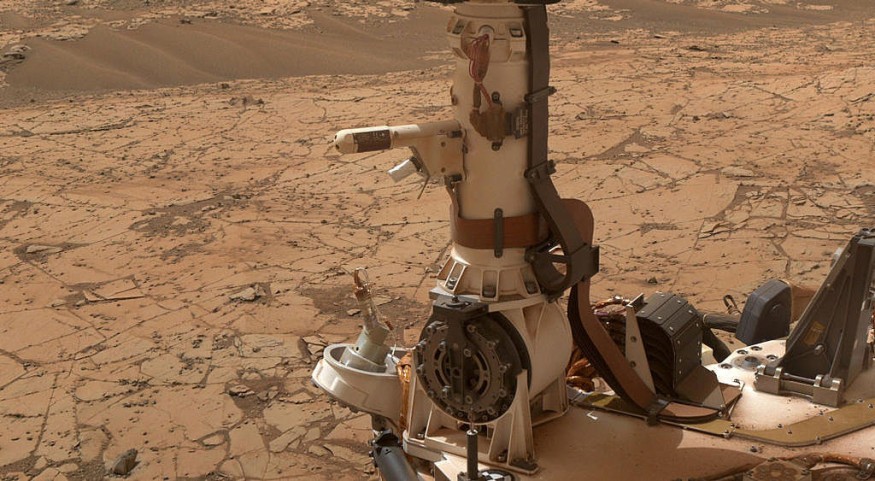
NASA continues its search for evidence of ancient life on Mars but may have to "dig much deeper" to find them.
New evidence reveals that any signs of life on Mars may have been destroyed or likely buried at least 6 feet (2 meters) under the ground due to so much radiation in the red planet, ScienceAlert reported. The search for life on Mars in the form of amino acids may have gotten to be a more difficult task knowing that cosmic radiation destroys this potential sign of ancient Martian life.
Furthermore, the new NASA laboratory experiment suggests that their Curiosity Mars rover may have to dig deeper for evidence of life because ionizing radiation from space degrades these small molecules relatively quickly, the agency wrote.
"Our results suggest that amino acids are destroyed by cosmic rays in the Martian surface rocks and regolith at much faster rates than previously thought," said Alexander Pavlov of NASA's Goddard Space Flight Center in Greenbelt, Maryland. "Current Mars rover missions drill down to about two inches (around five centimeters). At those depths, it would take only 20 million years to destroy amino acids completely.
Cosmic Radiation as a Huge Concern for Mars Exploration
According to the study published in the Astrobiology, the experimental results suggest serious challenges for search of ancient amino acids and other potential organic biosignatures in the top 2 m of the Martian surface.
It is known that amino acids are monomers of proteins and enzymes, and common in carbon-rich meteorites. Thus, they represent reasonable chemical evidence of ancient Martian life. However, they are also easily destroyed completely with cosmic radiation, with the addition of perchlorates and water increasing the rate of destruction even further, Pavlov said.
At about two inches depth, it will only take 20 million years to destroy amino acids, which is a relatively brief amount of time according to scientists. Evidence of ancient life on the Martian surface was said to have been present billions of years ago when Mars was more like Earth. Thus, findings suggest the need for new search strategy for missions limited to sampling at shallow depths.
The high-energy radiation on Mars, which could have annual exposure of over 250 millisieverts (average human on Earth is exposed to about 0.33 millisieverts of cosmic radiation per year), basically ionizes and destroys any organic molecules it encounters.
6 Feet Under
It was once thought that Mars had a global magnetic field, a much thicker atmosphere (more than Earth), and even liquid water in the form of oceans, rivers, and lakes, suggesting it could have been habitable repeatedly in the past.
To evidence this theory, scientists associate signs of habitability with the presence of amino acids - some of the most basic building blocks of life - although they are not a definitive sign of life. The research funded by NASA and led by Pavlov worked to better understand the likelihood of finding evidence of amino acids on the Martian surface through experiments that will test the hardiness of these compounds.
Furthermore, the results could give implications for the extinct life that is likely altered over time by radiation, and may not be as it was when formed.
Related article : Secret Passageways Used by Ancient Andean Culture Opened for the 1st Time in 3000 Years
© 2025 NatureWorldNews.com All rights reserved. Do not reproduce without permission.





